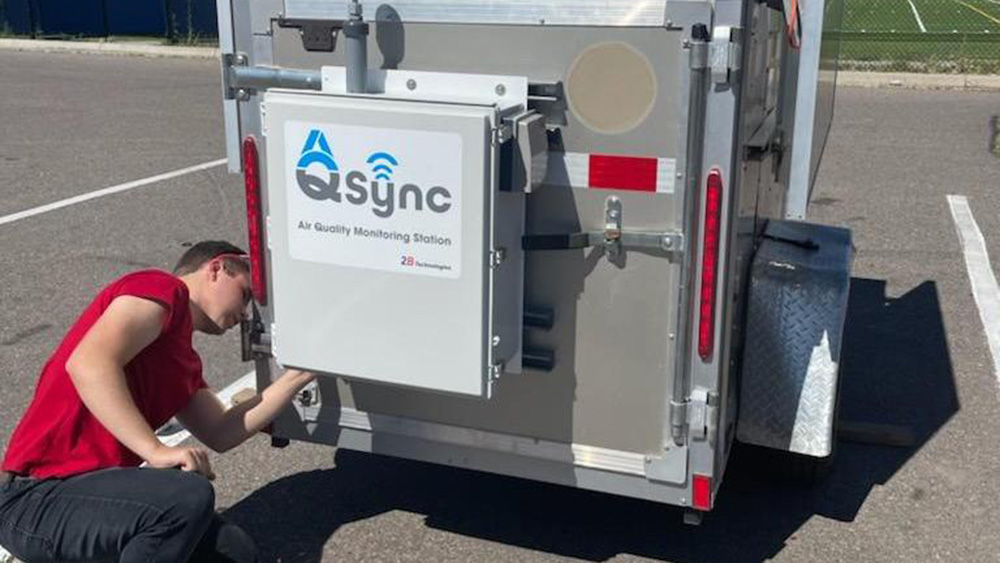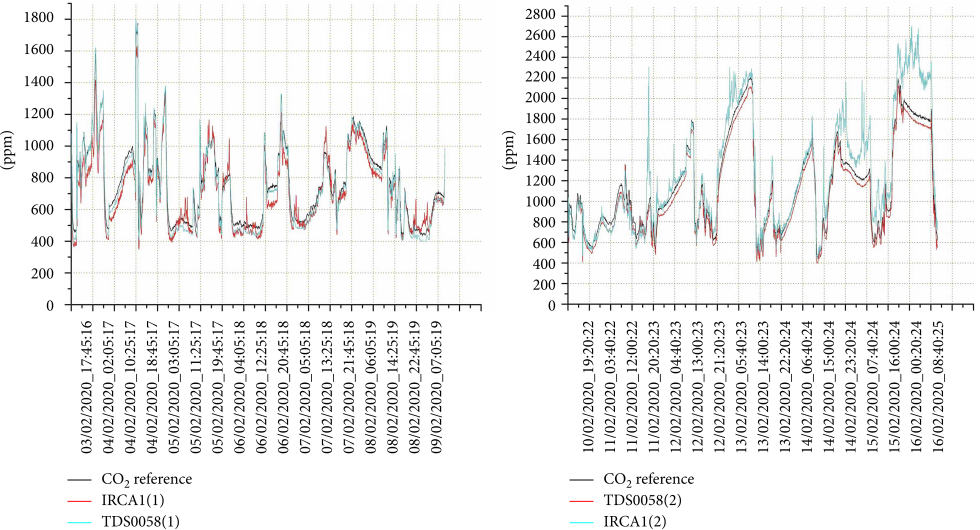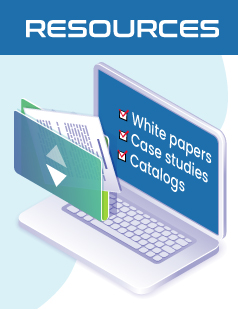
Calibrating Affordable Carbon Dioxide (CO2) Sensors
 The Challenge:
The Challenge:
Utilizing low-cost gas sensors as an alternative for monitoring air quality, whether in indoor or outdoor settings, presents certain challenges. The effectiveness of these sensors is contingent upon their operational measurement technique, and the quality of the data they provide can exhibit significant variations. Moreover, for optimal performance, these sensors require calibration at the deployment site. In indoor environments, monitoring CO2 levels is crucial for maintaining good air quality. Although low-cost gas sensors are commonly employed for this purpose, ensuring the accuracy of CO2 sensor performance necessitates careful evaluation and, if required, precise calibration. This assessment or calibration process involves comparing data from a reference instrument with the output from the sensor.

Figure 1: The plot of the CSV file produced by the SentinAir system. The CO2 reference data come out from the Model 106-L equipped with the CO2 module.
The Resolution:
An expeditious method for assessing or calibrating CO2 gas sensors in indoor settings involves employing the SentinAir system in conjunction with the Model 106-L by 2B Technologies, equipped with the CARBOCAP Carbon Dioxide Module GMM112 by Vaisala. By utilizing both these instruments, users can efficiently evaluate CO2 gas sensors like the IRC-A1 by Alphasense and the TDS0058 by Dynament, both housed within the SentinAir device. The Model 106-L serves as the CO2 reference instrument, establishing a connection to the SentinAir device's serial port via a USB adapter for seamless data acquisition. No additional devices or instruments are required for this operation.
Outcomes:
Data generated by the 2B instrument and the two CO2 sensors are recorded with timestamps, constituting a CSV (Comma Separated Values) file accessible for download from SentinAir. By treating the values from the Model 106-L as the reference, it becomes possible to employ a linear regression model for assessing sensor performance or calibration purposes. Key indicators such as the correlation coefficient (R2), intercept, slope of the model, mean absolute error (MAE), and standard deviation (SD) play crucial roles in evaluating sensor performance. Figure 1 presents an example of data from the described instrument setup, while Table 1 and Figure 2 provide a summary of the calculated indicators.

Figure 2: Scatter plots showing the relationships between sensor data and the 106-L model acting as reference.
Table 1: Indicators of CO2 performance calculated from the linear regression mode.
Sensor R2 MAE SD Slope Intercept
IRCA1(1) 0,934 144,245 64,469 1,055 102,836
TDS0058(1) 0,985 121,211 32,277 0,954 153,947
The Role of the 2B Tech Instrument:
In this study, the Model 106-L equipped with an integrated CO2 sensor served as the calibration reference for the low-cost sensors. By aligning the sensors with the calibration provided by the Model 106-L, they could be confidently deployed for the measurement of air quality in both indoor and outdoor environments. This particular version of the Model 106-L, known as the "GO3 CO2 Experiment Package," was offered as an optional upgrade to the Model 106-L by 2B Technologies until 2017. Current measurements of CO2 are now accessible through our Personal Air Monitor (PAM), the AQLite-Standard Air Monitoring Package, and the AQSync Air Quality Monitoring Station. In addition to CO2, the PAM, AQLite, and AQSync are capable of measuring carbon monoxide (CO), fine particulate matter (PM1, PM2.5, and PM10), temperature, pressure, and relative humidity.
The Key Takeaway:
While the GO3 CO2 Experiment Package is no longer available from 2B Technologies, we offer a range of alternative products designed to meet your CO2 measurement needs. Beyond the previously mentioned PAM, both the AQSync and AQLite provide Federal Equivalent Method (FEM) quality ozone measurements, as well as readings for CO, CO2, PM1, PM2.5, PM10, temperature, pressure, and relative humidity. The AQLite and AQSync, housed in weatherproof enclosures suitable for fixed installations (e.g., on light poles), also have an outdoor enclosure option for the PAM. These devices can directly upload data to our online database, allowing users to view it through a Google Earth-style overlay or download it as a CSV file.
The AQSync Air Quality Monitoring Station serves as an all-in-one instrument for measuring crucial air pollutants, offering customizable options for O3, NO, NO2, CO, CO2, PM1, PM2.5, ambient temperature (T), pressure (P), relative humidity (RH), wind speed, and wind direction. Utilizing FEM-grade measurements for O3 and NO2 and proven techniques for other pollutants, the AQSync features cellular connectivity for automatic data uploads to our online database. It can function as a drive-by calibration station for emerging sensor networks, facilitating adjustments to calibration parameters before field deployment. In data-sparse communities and developing countries, the AQSync can serve as a comprehensive air quality monitoring station, reducing infrastructure costs while ensuring compliance with local government regulations.
The Model 106-L Ozone Monitor is approved as a FEM for ambient ozone monitoring, certified to measure concentrations from 0-500 ppbv with an accuracy of 1.5 ppb or 2% of the reading (whichever is greater). Available in standard benchtop, wall-mount weatherproof, or OEM versions, the instrument caters to diverse monitoring needs.
For further details on using the Model 106-L, PAM, AQLite, or AQSync in your air monitoring application, please reach out to ES Canada.










